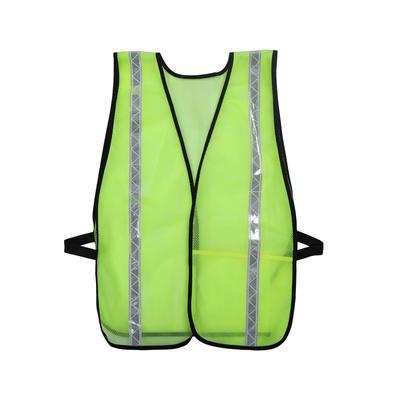The Enduring Quality of Reflective Vests: A Key to Worker Safety and Efficiency

Reflective vest, also known as high-visibility vests, is an essential component of personal protective equipment (PPE) in numerous industries. These garments are designed to enhance the visibility of workers in potentially hazardous environments, thereby reducing the risk of accidents. The durability of a reflective vest is a critical factor in determining its effectiveness and longevity. This article delves into the various aspects that contribute to the durability of reflective vests and how manufacturers ensure that these garments can withstand the rigors of daily use.
The first line of defense in the durability of a reflective vest is the choice of materials and the construction techniques employed. High-quality, durable fabrics such as polyester or nylon are commonly used due to their resistance to wear and tear, as well as their ability to withstand various weather conditions. The weave of the fabric plays a significant role in its strength; a tighter weave generally results in a more robust and long-lasting vest.
In addition to the fabric, the construction of the reflective vest is also crucial. Double stitching and reinforced seams are common techniques used to enhance the vest's durability. These methods ensure that the vest can withstand the stress of daily activities without fraying or tearing.
The reflective elements of a reflective vest are not only crucial for visibility but also for the vest's overall durability. Reflective materials, such as retro-reflective tapes or trims, are designed to maintain their reflective properties over time, even when exposed to sunlight, rain, and other environmental factors. The durability of these reflective materials is tested through rigorous quality control processes to ensure that they do not degrade or lose their reflective capabilities prematurely.
A well-fitting and comfortable reflective vest is more likely to be worn correctly and consistently, which in turn contributes to its durability. Manufacturers often incorporate features such as adjustable straps, breathable fabrics, and moisture-wicking technologies to ensure that the vest is comfortable to wear for extended periods. This not only improves worker compliance but also reduces the likelihood of the vest being damaged due to improper handling or adjustments.
Proper maintenance and care are essential in prolonging the life of a reflective vest. Manufacturers typically provide care instructions that outline the recommended washing methods and frequency. Following these guidelines can help prevent damage to the fabric and reflective materials, ensuring that the vest remains effective and durable.
In today's environmentally conscious world, the durability of a reflective vest also extends to its sustainability. Manufacturers are increasingly focusing on creating vests that are not only long-lasting but also have a reduced environmental impact. This includes using recycled materials, reducing waste in production, and ensuring that the vest can be recycled or disposed of in an eco-friendly manner at the end of its life.
The durability of a reflective vest is a multifaceted attribute that encompasses material quality, construction techniques, reflective technology, comfort, maintenance, and environmental impact. Manufacturers are continually innovating and improving their products to ensure that reflective vests offer the highest level of durability and safety for workers in various industries. By understanding the factors that contribute to the durability of a reflective vest, consumers can make informed decisions when selecting the right garment for their needs, ultimately contributing to a safer and more efficient work environment.
- Art
- Causes
- Crafts
- Dance
- Drinks
- Film
- Fitness
- Food
- Games
- Gardening
- Health
- Home
- Literature
- Music
- Networking
- Other
- Party
- Religion
- Shopping
- Sports
- Theater
- Wellness


